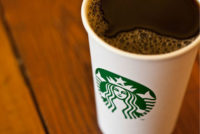![]()
Purchasing Plans to Remain Steady
By CATHERINE PENN
Beverage bottlers and
distributors will invest in new equipment next year at rates very similar
to this year, according to Beverage
Industry’s 2005 Buying Intentions survey.
The data show that beverage bottlers will drive equipment spending over the
first three months of 2005, and material handling, filling equipment and
conveyors will be the hot items. Also new in 2005 will be beverage
companies with less than $10 million in annual revenue buying equipment for
the first time in at least a couple of years.
From April to June 2005, equipment spending will be
dominated by distributors buying trucks, tractors and trailers to replace
existing vehicles. For the rest of the year, bottlers will again drive
equipment spending with their need to increase capacity through new plants
and processing machines.
Distributors consider beer and soft drinks their most
lucrative areas with bottled water and juices following. Although wine and
distilled spirits are smaller segments of the beverage industry, their
distributors suggest they will expand greatly in 2005.
New construction
Beverage companies with annual revenues more than $250
million are twice as likely as smaller organizations to engage in new
construction in 2005. New construction most likely means expanding an
existing facility; however, 29 percent of large companies engaged in
construction will build brand new facilities in 2005.
The data show that at least one in 10 companies
involved in producing or distributing dairy, beer and bottled water
products plan to build new facilities in 2005. As a rule, those involved
with wine and spirits will not engage in new construction, although 21
percent will expand an existing facility.
Beverage distributors know that consumers are tempted
by new drinks. The data suggest the choices of beer and soft drinks will
expand in the coming months. In 2005, 71 percent of distributors will add
new beers to the mix, and 59 percent will offer additional soft drinks.
Interest in energy drinks is also increasing as half of all distributors
will have new energy drink choices in 2005. Bottled water, which is pretty
ubiquitous, is likely to stay that way without any dramatic increase
expected at the moment.
Distributors have juice drinks available 43 percent of
the time, and 40 percent will add new juices in 2005. One-third offer
sports drinks and ready-to-drink coffee and tea, and these segments will
grow in the coming months as most distributors are looking for new
products. Dairy drinks are less widely available from distributors —
nevertheless 29 percent will offer additional dairy drinks.
While wine and spirits are more specialized, being
available at 17 percent and 11 percent of surveyed distributors,
respectively, they represent strong growth segments. In 2005, 67 percent of
distributors will offer new wines and 75 percent will increase the choice
of spirits.
Vehicles
Distributors prefer to own, rather than lease, their
vehicles: 80 percent own trucks and trailers, whereas 40 percent lease them
(some own and lease vehicles). The data show that most distributors —
52 percent — will be buying new vehicles in 2005.
Beverage bottlers are more likely to lease vehicles;
however, ownership is preferred. These processors own 63 percent of the
time and lease 53 percent of the time. Bottlers will be less likely
purchasers of new vehicles in 2005 — 26 percent said this was part of
their spending plan.
New wheels for beverage companies in 2005 will include
tractors, mentioned by 56 percent of new vehicle purchasers, and trucks,
planned by 47 percent. Also, 41 percent will purchase cargo vans.
Equipment purchasing in 2004
Distributors and bottlers bought new equipment in 2004 —
93 percent bought new and 9 percent went with used.
Distribution is all about vehicles so it’s not
surprising that 64 percent of beverage distributors purchased vehicles in
2004. Trucks were bought 50 percent of the time, and 21 percent bought
tractors. Other vehicles bought in 2004 include vans, cars, trailers and
forklifts.
Beverage manufacturing and warehousing had respondents
typing-up purchase orders for production, filling, packaging and material
handling equipment. In 2004, beverage-makers bought equipment that included
blending equipment, filters, kegs, compressors, grain silos, grinders, heat
exchangers, racking equipment, rinsers, spinners and vats. In terms of
packaging, they ordered case packers, labeling equipment, erectors,
bundlers, foilers and stretchwrappers. Material handling equipment
purchases included conveyors and palletizers/depalletizers.
The data suggest that equipment purchases in 2005
might be very similar to that purchased in 2004. Companies with more than
$10 million in annual revenue will be purchasing equipment at the same
level as they were in 2004. But beverage companies with less than $10
million in annual revenue have ambitious equipment purchasing plans for
2005. In 2004, 45 percent of these companies bought new equipment. In 2005,
85 percent say they plan to buy new equipment.
Equipment spending by beverage producers in 2005 will
be driven by a need to increase capacity. The data show 55 percent of
bottlers will buy new equipment to add capacity, and 50 percent plan to
replace existing equipment. Most bottlers will focus on material handling,
filling equipment and conveyors in 2005, each mentioned by at least 40
percent of bottlers. Other areas of spending will be multipack equipment,
mentioned by 30 percent, and labelers, anticipated by 27 percent. Eleven
percent of bottlers will purchase equipment for an entirely new facility.
One in four bottlers will buy in the area of
computers, vending and quality control equipment. Of those making quality
control purchases, 82 percent will be looking to monitor manufacturing,
while 36 percent will purchase lab equipment. Computers are likely to be
used for plant automation and office activities.
Other areas of new equipment spending for bottlers
include merchandisers, palletizers and depalletizers, dispensing equipment
and water treatment equipment, each mentioned by 20 percent of respondents.
For respondents with
distribution responsibilities, equipment purchasing activity in 2005 will
be driven by the need to replace existing or outdated equipment. The main
areas of spending for distributors will be material handling equipment and
computers, each expected by 44 percent. Most likely, computers will be for
distribution and warehousing activities. One in three expect to buy new
vending equipment.
Equipment spending timetable
The data show that bottlers will drive equipment
spending during the next three months — from January to March 2005.
From April to June, equipment spending will be dominated by distributors.
For the rest of 2005, bottlers will again be the big spenders.
According to respondents, most equipment purchases in
January to March 2005 will be in the areas of material handling, filling
equipment and conveyors. April to June will see an increase in spending for
vehicles as distributors look to replace existing trucks, tractors and
trailers.
Overall, it seems beverage companies anticipate
sustained growth into 2005, as bottlers plan to increase spending on new
plant and processing equipment and distributors purchase new vehicles.
Another indication of sustained growth is beverage companies’ desire
for new rather than used equipment is the fact that the motivation for
buying new equipment is to increase capacity, and the fact that 25 percent
of bottlers engaged in construction plan to build a new facility in 2005.
While the type of equipment being bought might be
similar to that purchased in 2004, it is important to remember that most
bottlers surveyed will be spending more — buying two machines rather than one.
Methodology
Beverage Industry’s
2005 Buying Intentions Survey includes responses from bottlers, 64 percent
of those surveyed, and distributors, 36
percent.
In terms of job function, 57 percent of respondents
are from general management; 22 percent have fleet, distribution and
logistics positions; and 17 percent are from R&D. Twelve percent are
from sales/marketing and 9 percent are from purchasing.
Beverage companies with annual revenue of more than
$250 million, represent 27 percent of the sample and 11 percent work where
revenue is $100 million to $250 million. One in four of respondents work at
facilities where annual revenue is less than $10 million, and 38 percent
report revenue $10 million to $100 million.
In terms of geography, 29
percent of respondents work at beverage facilities located in the southern
United States, and 27 percent work in the western part of the country. The
midwest represents 21 percent of interviews and 18 percent of respondents are from the northeast. Ten percent are located
in Canada and 6 percent have facilities located throughout the country. BI



